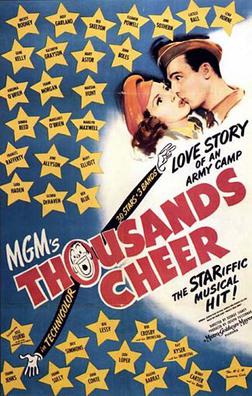From Wikipedia, the free encyclopedia

Public Domain, Link
| “Let Me Call You Sweetheart” | |
|---|---|
| Sheet music cover (1910) | |
| Song | |
| Written | 1910 |
| Composer(s) | Leo Friedman |
| Lyricist(s) | Beth Slater Whitson |
“Let Me Call You Sweetheart” is a popular song, with music by Leo Friedman and lyrics by Beth Slater Whitson. The song was published in 1910 and was a huge hit for the Peerless Quartet in 1911. A recording by Arthur Clough was very popular the same year too. A 1924 recording identifies a Spanish title, “Déjame llamarte mía”.
The complete lyrics:
I am dreaming Dear of you, day by day
Dreaming when the skies are blue, When they’re gray
When the silv’ry moonlight gleams, Still I wander on in dreams
In a land of love, it seems, Just with you
Chorus:
Let me call you “Sweetheart,” I’m in love with you
Let me hear you whisper that you love me too
Keep the love-light glowing in your eyes so true
Let me call you “Sweetheart,” I’m in love with you
Longing for you all the while, More and more;
Longing for the sunny smile, I adore
Birds are singing far and near, Roses blooming ev’rywhere
You, alone, my heart can cheer; You, just you
| Thousands Cheer | |
|---|---|
| Theatrical release poster | |
| Directed by | George Sidney |
| Produced by | Joe Pasternak |
| Written by | Paul Jarrico Richard Collins |
| Starring | Kathryn Grayson Gene Kelly Mary Astor John Boles Ben Blue Frances Rafferty |
| Music by | Irving Berlin Lorenz Hart Jerome Kern Nacio Herb Brown Richard Rodgers George Gershwin Ira Gershwin Max Steiner Dmitri Shostakovich |
| Cinematography | George J. Folsey |
| Edited by | George Boemler |
| Distributed by | Metro-Goldwyn-Mayer |
| Release date | September 13, 1943 |
| Running time | 125 minutes |
| Country | United States |
| Language | English |
| Budget | $1,568,000 |
| Box office | $5,886,000 |
Thousands Cheer is a 1943 American musical comedy film directed by George Sidney and released by Metro-Goldwyn-Mayer. Produced at the height of the Second World War, the film was intended as a morale booster for American troops and their families.
The film is essentially a two-part program. The first half consists of a romantic comedy storyline involving an aerialist, played by Gene Kelly, who is drafted into the US Army but really wants to join the air force. During training, he falls in love with Kathryn (played by Kathryn Grayson), the daughter of his commanding officer, who has similarly put her singing career on hold in order to serve by providing entertainment for the troops. Unusually for this type of a film (and for this era of Hollywood), the character Kathryn has only recently met her father for the first time since she was a baby, her parents having divorced. A related subplot has Kathryn conniving to get her parents (played by John Boles and Mary Astor) to reconcile. During the first part of the film, Grayson sings several numbers and Kelly performs one of his most famous routines, dancing with a mop as a partner.
The secondary plot involves preparations for a major live show for the soldiers which will feature many MGM musical and comedy stars. For the second half of the film, all pretenses of a storyline are effectively abandoned as the film instead becomes a variety showcase of comedy, song, and dance, with all of the performers (save Kelly and Grayson) appearing as themselves. The show portion is hosted by Mickey Rooney.
Performing as “guest stars” in the film’s show segment were: Judy Garland, Lena Horne, Red Skelton, Ann Sothern, Lucille Ball, Frank Morgan, Virginia O’Brien, Eleanor Powell, Marilyn Maxwell, June Allyson, Gloria DeHaven, Donna Reed, Margaret O’Brien, the Kay Kyser Orchestra and others. Pianist-conductor José Iturbi appears as himself in both segments of the film; this was his first acting role in a film and he would go on to make several more appearances (usually playing himself) in MGM musicals.
Highlights included a performance of “Let Me Call You Sweetheart” by Kelly and a mop, “Honeysuckle Rose” by Horne and Benny Carter‘s band, a tap dance solo by Powell (making her first color film and her final MGM movie until 1950’s Duchess of Idaho), Kay Kyser’s band delivering a frantic and humorous medley of “I Dug a Ditch in Wichita”/”Should I?”, and a Garland performance (with classical pianist Jose Iturbi) of Roger Edens‘ “The Joint is Really Jumpin’ in Carnegie Hall” which includes an early use of the word “rock” in a musical sense. In the phone scene with Grayson, Iturbi performs an excerpt from Franz Liszt’s Rhapsodie #11.
According to MGM records the film earned $3,751,000 in the US and Canada and $2,135,000 elsewhere resulting in a profit of $2,228,000.
The film was nominated for three Academy Awards; Best Cinematography, Best Score and Best Art Direction (Cedric Gibbons, Daniel B. Cathcart, Edwin B. Willis, Jacques Mersereau).
“Honeysuckle Rose” was nominated for the American Film Institute‘s 2004 list AFI’s 100 Years…100 Songs.
Watch the movie “Thousands Cheer”




































































Comments